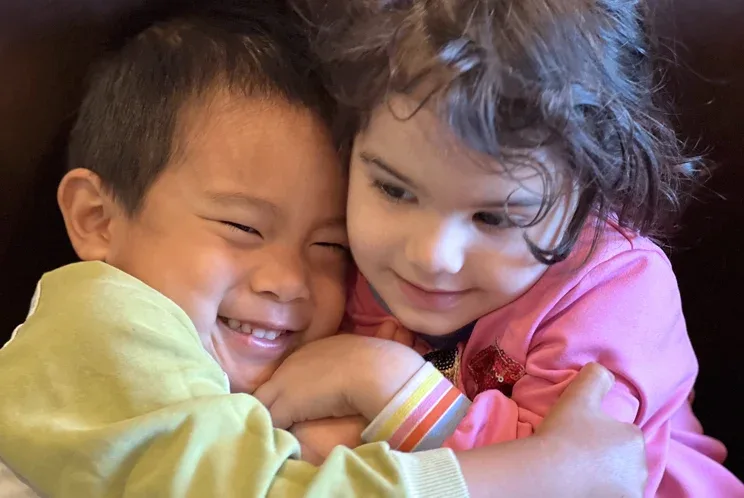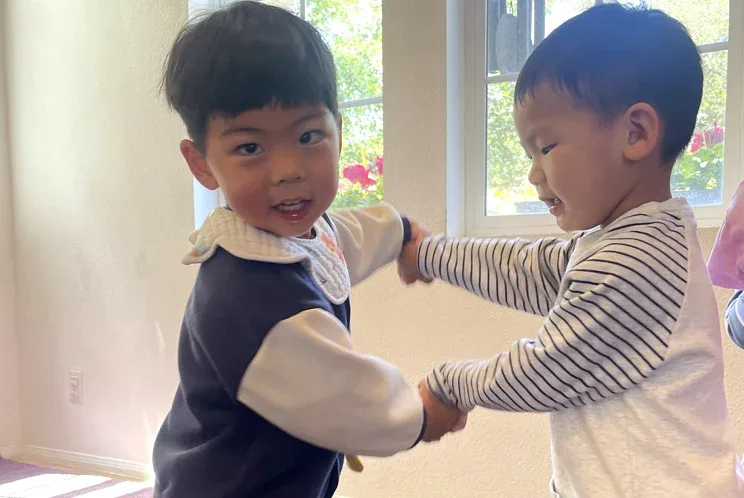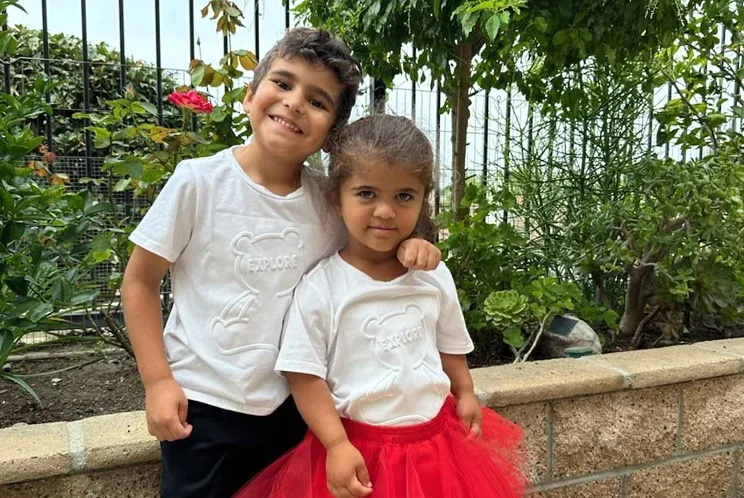
Did you know a child’s ability to make friends, handle frustration, and understand their feelings can be just as important as their ABCs? In early childhood education, emotional and social skills lay the foundation for lifelong success. From learning to manage emotions during conflicts to developing empathy for peers, these skills play an important role in your child’s academic and social growth.
In this post, we’ll explore actionable strategies and insights for supporting your child’s emotional and social growth, and how parents, caregivers, and educators can work together to nurture these essential aspects of early development.
Contents
- 1 What is emotional and social development in early childhood education?
- 2 How Parents Can Support Emotional Growth at Home
- 3 Social-Emotional Learning Programs in Early Education
- 4 Encouraging Positive Peer Relationships
- 5 The Impact of Family Dynamics on Emotional and Social Growth
- 6 FAQs about Child’s Emotional and Social Growth
- 7 Final Thoughts
Recognizing early childhood milestones is essential for effectively supporting your child’s emotional and social growth. These milestones shape your child’s ability to interact with others, manage their feelings, and navigate the world around them.
Key Emotional Milestones
As children grow in early childhood, they pass through critical stages of emotional development that allow them to understand and regulate their feelings. These milestones are foundational for their future well-being, helping them build resilience and form healthy relationships.
Early Emotional Awareness
By the age of 3, children begin to develop a greater awareness of their emotions. At this stage, they can start identifying basic emotions like happiness, sadness, anger, and fear. For example, a 3-year-old might say, “I feel sad because I can’t find my toy,” showing they can connect their feelings to specific events.
During this phase, encouraging your child to express their emotions verbally through simple phrases or facial expressions helps them understand their emotional state more clearly. You can also introduce a feelings chart with pictures representing different emotions to help them connect words to their feelings. This process is essential in building their emotional intelligence, giving them the vocabulary they need to express themselves effectively.
Emotional Regulation
By the ages of 4 and 5, children start developing emotional regulation skills, which is when they learn to manage and control their emotional responses. For example, a 4-year-old may be upset when they lose a game but may be able to calm down by counting to ten or taking deep breaths.
This is a critical developmental stage, as it marks the beginning of coping strategies that help young children handle frustration, disappointment, and anxiety in a healthier way. At this age, children start using techniques like deep breathing, seeking out quiet spaces, or asking for help when they feel overwhelmed. You can further support their emotional skills by modeling calm responses to stressful situations and practicing these strategies with them.
For instance, during moments of stress, calmly saying, “Let’s take three deep breaths together” helps reinforce that emotional control is a learned skill, not something to be feared. Encouraging this practice not only builds resilience but also allows your child to feel more in control of their emotions, which increases their confidence in handling new or challenging situations.
Social Milestones in Early Years
Children between the ages of 3 and 5 experience rapid social development as they begin forming their first real peer relationships. These years are foundational for learning how to interact with others, resolve conflicts, and build a sense of community within group settings.
Developing Peer Relationships
From around age 3, children start to move beyond parallel play, where they play alongside others without much interaction, into more cooperative forms of play. By age 4 or 5, they often initiate friendships, engage in turn-taking games, and show interest in others’ ideas. For example, a child may invite a peer to build a block tower together or suggest rules for a make-believe game. These early friendships provide opportunities to practice important skills such as negotiation, empathy, and compromise.
Parents and educators can support this process by organizing small group activities and encouraging playdates where children have the opportunity to interact in low-pressure environments. You might say, “I noticed you and Mia shared the puzzle pieces nicely today. That’s a great way to be a good friend.” Reinforcing these behaviors with specific praise helps children understand what positive social interaction looks like.
Understanding Social Cues
As children grow, their ability to read and interpret nonverbal communication improves significantly. By the time they’re 5, many children can recognize when a peer is feeling left out, irritated, or excited just by observing facial expressions, posture, or tone of voice. These observations are critical for building empathy and forming deeper connections with others.
Helping your child identify social cues can be as simple as pointing them out during daily interactions: “Did you see how Alex crossed his arms and turned away? He might be upset.” You can also use picture books, role-playing games, or videos to practice identifying emotions based on facial expressions and body language. Supporting your child in recognizing and responding to these cues builds the foundation for meaningful communication and socially appropriate behavior.

The Role of Educators in Fostering Emotional and Social Skills
Teachers play an essential role in supporting a child’s emotional and social growth. By creating a nurturing environment at school, they can help children develop emotional intelligence and build strong social connections, setting them up for future success both inside and outside of the classroom.
Creating an Emotionally Supportive Environment
A classroom environment where children feel safe and valued is crucial for their mental health. When children experience a warm, supportive atmosphere, they are more likely to take risks in their learning and engage openly with others.
Encouraging Positive Interactions
Teachers set the tone for social and emotional development by modeling behaviors like kindness, empathy, and respect. For instance, when a teacher models using polite language, sharing, and listening attentively, they provide children with examples of how to interact with peers in a socially responsible way. A teacher who consistently encourages teamwork and cooperative games encourages a spirit of collaboration and helps children build strong social skills.
Creating a space where every child feels seen and heard is also crucial. By encouraging children to greet their peers with respect, say “please” and “thank you,” and show appreciation for others’ efforts, teachers are helping to build a classroom culture of kindness. A teacher might say, “I saw how you helped Emily pick up the crayons, great teamwork!” Positive reinforcement like this boosts a child’s self-esteem and encourages them to engage in more positive interactions.
Responding to Emotional Needs
When children face emotional challenges, whether due to frustration, sadness, or anxiety, teachers must be equipped to respond calmly and empathetically. A child who is upset may struggle to focus or engage in play, and it’s important for teachers to intervene in ways that provide comfort and support.
For example, if a child is frustrated because they are struggling to complete a puzzle, a teacher might say, “I can see you’re having a hard time. Let’s take a deep breath together and then try again.” This approach validates the child’s emotions while also providing them with a strategy to manage their frustration.
Similarly, when a child is anxious or shy in social situations, teachers can gently guide them through their emotions by acknowledging how they feel. A teacher might say, “It’s okay to feel nervous when meeting new friends. Why don’t you start by asking if anyone wants to play with you?” By acknowledging their feelings and providing specific strategies, teachers help children build emotional resilience and confidence.
Social Skills Training in the Classroom
Social skills are essential for building healthy relationships and managing interactions with others. In the classroom, teachers have the opportunity to guide children through key social skills, such as conflict resolution, sharing, and teamwork. By embedding these lessons into everyday activities, teachers can help children develop the emotional intelligence needed to navigate the complexities of social life.
Conflict Resolution Strategies
Conflicts are a natural part of a child’s development, and how they handle them can affect their emotional and social growth. Teachers can guide children in expressing their feelings without aggression, using phrases like “I feel upset when you take my toy.” By encouraging children to take turns speaking and listening to one another, teachers foster respectful communication and help children understand different perspectives.
Teachers also play a key role in teaching children the importance of apologizing to rebuild trust and strengthen relationships. By modeling and praising appropriate apologies, such as saying “sorry” after a disagreement, teachers help children develop empathy and responsibility. This process not only resolves conflicts but also reinforces the value of caring for others’ feelings in social interactions.
Promoting Group Play and Cooperation
Group play and cooperative activities are key for developing essential social skills, and teachers can create opportunities for children to collaborate and share. For example, group projects like building with blocks or creating art allow children to practice taking turns, compromising, and solving problems as a team. Teachers can guide children in sharing materials and resolving conflicts to maintain cooperation during these activities.
In addition, teachers can encourage group games that require teamwork, like relay races or team-building exercises, where children experience the benefits of collaboration. Recognizing and praising positive behaviors, such as helping others or working well in a group, reinforces the value of teamwork and teaches children that success is often achieved through collaboration.

How Parents Can Support Emotional Growth at Home
Parents are a child’s first teachers and play a vital role in child development. Parents can help children develop emotional intelligence and resilience by creating a supportive home environment.
- Labeling and Discussing Emotions
Encourage your child to name and recognize their emotions with phrases like, “I can see you’re feeling sad.” This helps children understand their feelings better. - Active Listening Techniques
Practice active listening by giving your child your full attention when they speak, showing that their feelings are important. - Praising Effort, Not Just Outcomes
Focus on praising your child’s effort rather than just the end result, which encourages persistence and emotional resilience. - Setting and Respecting Boundaries
Teach your child about boundaries, helping them understand what is acceptable behavior and creating a sense of security and respect.
Social-Emotional Learning Programs in Early Education
Social-Emotional Learning (SEL) programs teach children essential skills for managing emotions, building relationships, and making responsible decisions.
Core Components of SEL Programs
Social-Emotional Learning programs focus on building essential emotional and social skills in children. They emphasize self-awareness and self-management, teaching children to recognize their emotions, understand their triggers, and regulate their behavior, which is crucial for emotional development.
Additionally, SEL programs focus on social awareness and relationship skills, helping children develop a sense of empathy, understand others’ perspectives, and build healthy relationships, all of which contribute to positive peer interactions and overall emotional well-being.
Integrating SEL into Daily Classroom Activities
Integrating Social-Emotional Learning into daily classroom activities provides children with practical opportunities to develop emotional and social skills. Circle time allows children to share their feelings and experiences, creating a trusting environment that promotes emotional expression and active listening.
Additionally, role-playing and storytelling activities help children practice social interactions, explore different perspectives, and develop empathy, all of which enhance their ability to communicate and navigate relationships effectively in the classroom and beyond.
Encouraging Positive Peer Relationships
Encouraging positive peer relationships is essential for a child’s social development. Both structured and free play offer valuable opportunities for children to develop important social skills and build strong friendships. By addressing challenges like conflicts and promoting inclusivity, parents and educators can help children navigate social interactions effectively.
- Cooperative Games and Team Activities: Teach teamwork, sharing, and communication through group games.
- Providing Opportunities for Free Play: Allow children to navigate social interactions independently, enhancing problem-solving and adaptability.
- Navigating Conflicts: Teach strategies like using “I feel” statements, taking turns, and walking away to resolve disagreements calmly.
- Encouraging Inclusivity: Promote inclusive play and help children understand the importance of including others, especially those who feel left out.
The Impact of Family Dynamics on Emotional and Social Growth
Family dynamics significantly influence a child’s emotional and social growth. From everyday conversations to interactions with extended family members, these relationships shape how children learn to express themselves, build connections, and navigate social situations.
- Supportive Family Conversations: Encourages children to express their emotions in a safe, supportive environment.
- Modeling Social Skills at Home: Parents teach social skills like respectful communication and conflict resolution through their own behavior.
- Grandparents and Close Family Friends: Provide diverse perspectives and additional support that enrich emotional growth.
- Sibling Relationships and Their Influence: Help children develop important social skills such as negotiation, cooperation, and managing rivalry.

FAQs about Child’s Emotional and Social Growth
Social and emotional problems in early childhood can include challenges like difficulty forming friendships, managing emotions, expressing feelings appropriately, anxiety, aggression, or struggles with empathy and understanding social cues.
What are the 5 stages of emotional development in childhood?
The 5 stages of emotional development in childhood include infancy (trust vs. mistrust), toddlerhood (autonomy vs. shame), early childhood (initiative vs. guilt), middle childhood (industry vs. inferiority), and adolescence (identity vs. role confusion).
The 5 components of social-emotional development are self-awareness, self-management, social awareness, relationship skills, and responsible decision-making. These elements help children understand and regulate their emotions while interacting positively with others.
Teachers play a key role in social-emotional learning by modeling positive behaviors, guiding conflict resolution, creating a safe environment, and helping students develop skills like empathy, self-regulation, and effective communication.
What is SEL for kids?
Social-Emotional Learning (SEL) for kids is a process that teaches children how to understand and manage their emotions, set and achieve goals, empathize with others, establish positive relationships, and make responsible decisions.
Final Thoughts
Supporting your child’s emotional and social growth in early education is not just important, it’s essential for their long-term success and well-being. When children feel confident in expressing their emotions and building healthy relationships, they are better equipped to navigate challenges both in and out of the classroom.
By using thoughtful strategies, such as encouraging open communication, fostering empathy, and providing structured play opportunities, you can create a nurturing environment that promotes emotional intelligence and strong social bonds. With the right support, your child’s emotional and social growth will lay the foundation for their resilience, relationship-building abilities, and overall success throughout life.
Have questions or insights on supporting your child’s emotional and social growth? Feel free to leave a comment below! We’d love to hear your experiences and ideas; your input could be valuable to other parents and educators on this important journey.

